above added 9/15/2018 MSE
Above shows Clement Crosar, in possession of Stobs, but it is felt that Clement may have been a tenant of Gledstanes.
The Gledstanes are of Coklaw (cok a pile, coke a fuel made from normally coal).
Collifort/Collyfort hill, where Colly coal Colliery a producing region of a item such as coke, to make iron.
Cokes/Cokkis for John and Clement Crosar brother, mean they were loyal to the estate of the tower of Cok-law Castle of the Gledstane family of Collifort (colliery fort) Hill, likely meaning a hill of a Colliery which produces coke.
So it is felt the Crosar where tenants of the Gledstanes of Stobs then Hummelknowes. The Gledstanes own Stobs when Clement and brother John lived there.
As one can see above that Walter Gledstanes is the brother to the Younger of Coklaw.
Clement Crosar lived in Stobes and John and Adam of Agerstone Shields.
The south most fort near the Crosar of Stobs and Adderston Shiels, on what is felt to be Gledstanes estate Coklaw, which makes it the likely locality since it is a law (mound) on a hill of Colliforthill (hill with forts). Cok/coke is part of a colliery (colli cok/coking oven) operation.
It is felt from Hawick to Stobs considering the number of ruins of forts this may be a fort hill, with a colliery on it, and a farm took the name of the hill called Collifort Hill.
In 1654 on the Blaeu map Collyfort Hill is listed, and think it relates to the two southern forts.
colliery (n.)
1630s, “coal mine,” see collier + -y (1).
https://www.etymonline.com/word/colliery
coke (n.1)
“fuel residue, solid product of the carbonization of coal,”an important substance in metallurgy, 1660s, a northern England dialect word, perhaps a variant of Middle English colke “core (of an apple), heart of an onion” (c. 1400), also “charcoal” (early 15c.), a word of uncertain origin. It seems to have cognates in Old Frisian and Middle Dutch kolk “pothole,” Old English -colc, in compounds, “pit, hollow,” Swedish dialectal kälk “pith.” Perhaps the notion is the “core” of the coal, or “what is left in the pit after a fire.”https://www.etymonline.com/word/coke
[ME. glede, (OE. glida. The shortening of the vowel is unusual.]
A kite. Early examples in place-names are Gleddiswod (c 1200), Gledstanes (c 1354).
[ME. gleede, glede, OE. gléd.]
A live coal, an ember.
[Early and north. ME stane (c1175-1411), stan (Orm), ME and e.m.E. ston (c1200), stone (Manning), stoon (Chaucer), stonne (1520), OE stán, ON stein.]
A stone. Also in place and personal names.
On map one can see it has trees inside of pins of map which are said to be stake at the time referred to as stobs which are the delineators/divider or the land boundary for the estate, and likely where the name Stobs came from. With tree it s difficult to do compass line-of-sight surveying so this is the reason it is felt the land was stobbed.
Walter Glenstanes of Whitelaw (above Whytlaw).
Acreknow/Akerknow listed as apart of the Stobs estate.
One can see that Whitelaw, Cokelaw of Gledstanes, and it is felt that the Ellot of Stobs were allied with Buccleuch.
Since the Crosar being Cokis service to Coklaw live around the most southern ruins locality, listed as forts without settlement, which is felt to be as mapped in 1654 as the two forts of Collyfort Hill.
Shows …NE by Stobs Castle; Carboniferous (type of strata which is coal bearing), and sandstone. Old Red Sandstone, iron bearing or contact zone with a coal burn out.
Region shows where a colliery could be for a coking oven likely old English beehive skep in shape.
As one can see utilizing the tree of Horsleyhill be second generation research genealogist, along with his mother has done the most outstanding genealogical research
on the family which has been ever done. Though if the Elwald name is not consider a line and the Gorrenberry family is not recognize as Elwald landholders.
William is placed first because of the following seal.
Above seal is of a stag head, described as similar to the Elwood shield;
Claims origins near York.
It should be noted that above shield has an the Gibert Ellot (verily literate as one can see in signiture) is of Gilbert Ellot of Horseleyhill with a shield on it.
Above is a complaint of Gilbert Ellot of Horseleyhill.
Above seal is of a stag head, described as similar to the Redheugh shield, with and elwand at time Robert of Redheugh was referred to as Robert Elwand.
Gilbert claims to be of Horseleyhill, Ballillie down river from the first Buccleuch, and Stobs, acquire from the Gledstanes.
Feel that Gavin would be the father of the Gavin (still working on this placement), may be the father of Gavin; Gilbert’s stepfather, this may have drawn Arthur Eliott into thinking that Robert is the oldest, but according to who lived, and the William Ellot seal of Horseleyhill, indicates the oldest and holds because of the distinct difference in seals that it is not of Lariston because these are lands of Redheugh also, that it is a seal of a line with leanings to William as the name (like Lariston) for the family, and the Gorrenberry line supports this concept.
One can see that this William Ellot of Horseley Hill did tutor his Gilbert of Horseleyhill, Stobs then Redheugh.
As one can see where Gilbert obtained Stobs;
May be the Scott and Stobs do not get along.
It should be noted that William died soon after the English Civil war and Gilbert to become a Sir Gilbert gained lands of Stobs and other lands.
Mark Elliott 12/22/2014


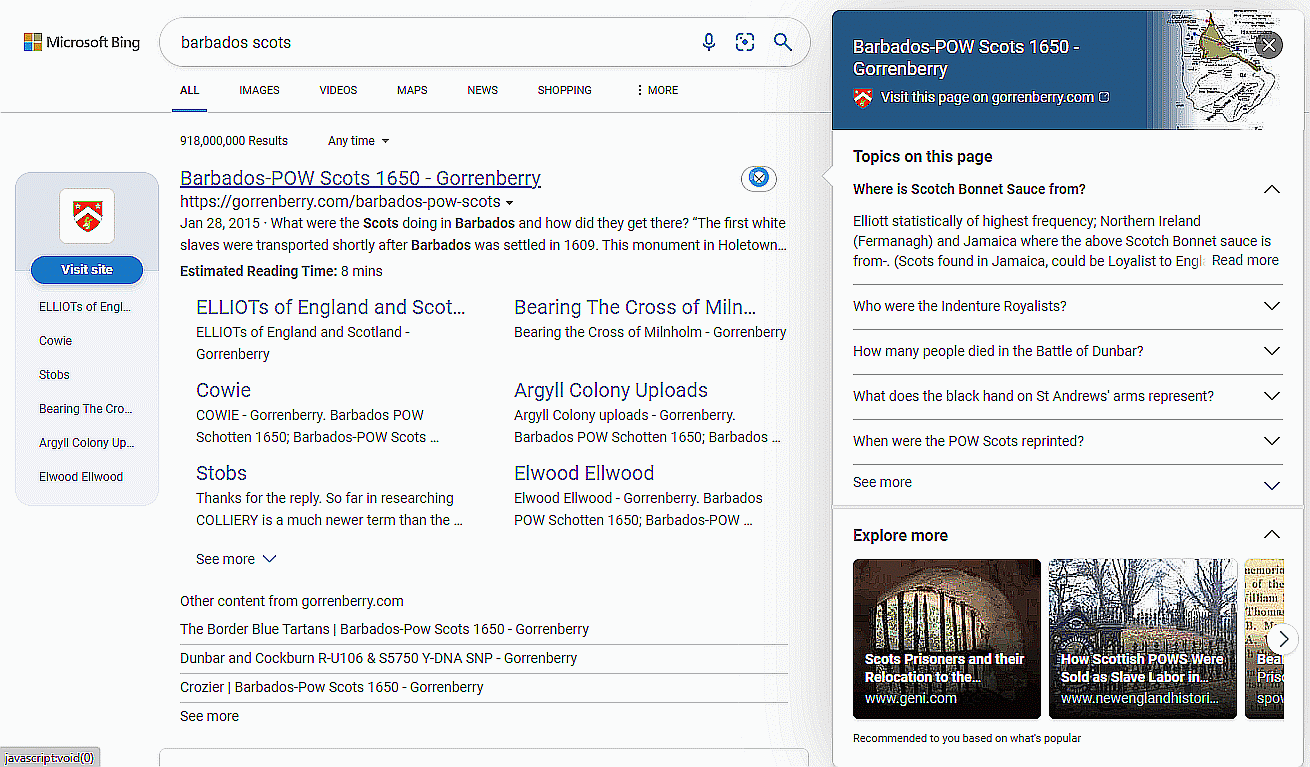
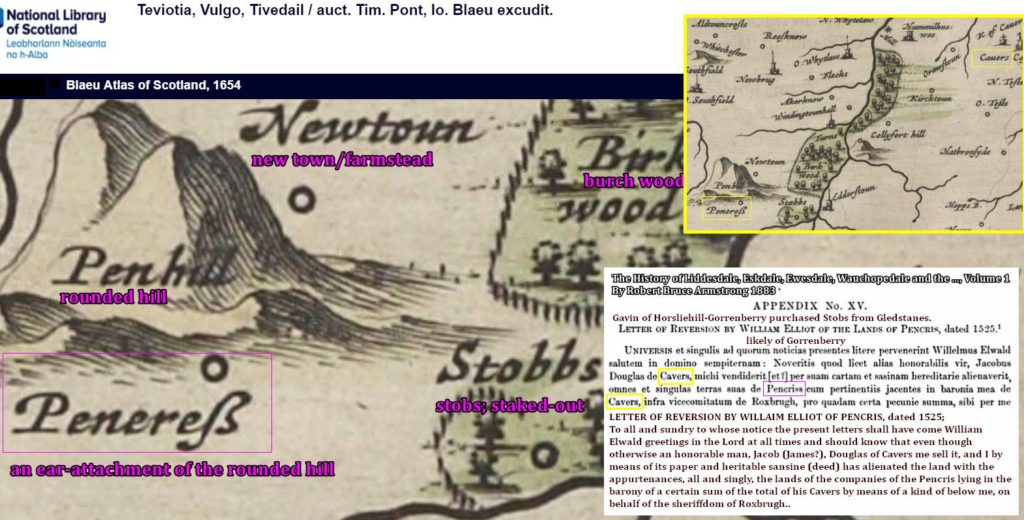
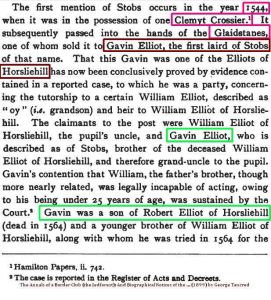
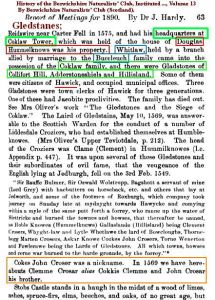
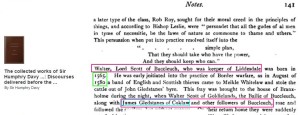

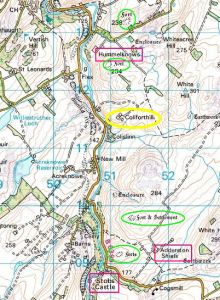

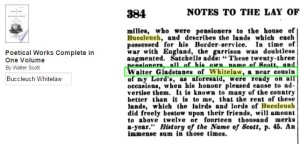


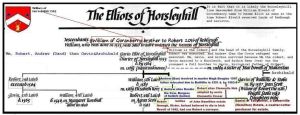
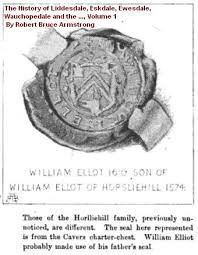
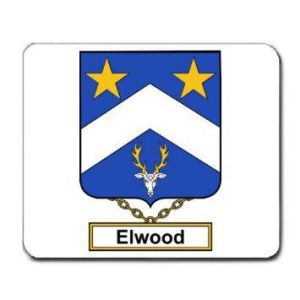
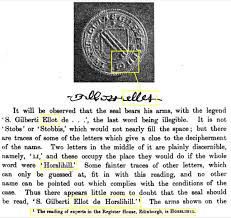

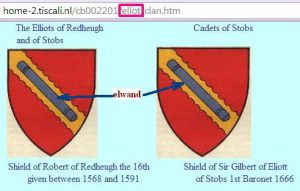
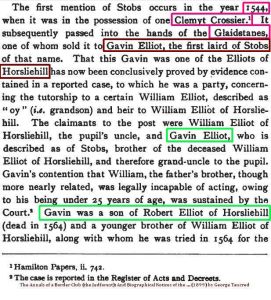
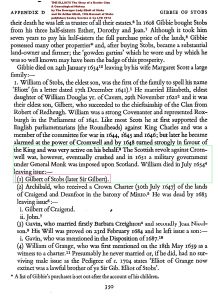

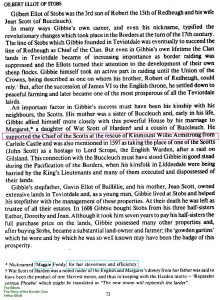
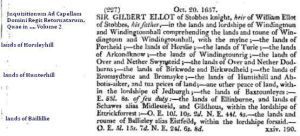

Hi, Stobs Castle, Croziers. just to let you know that Gledstanis (Gledstanes/Gladstone family) of Coklaw had nothing to do with coal. Cocklaw was their property in Hawick now named Ormiston. Collifort Hill has nothing to do with colleries. The names were saxon or even earlier.
Thanks for the reply. So far in researching COLLIERY is a much newer term than the word MINE. Though it is felt you had given an excellent answer which got me to thinking, want to thank you for that; the region is laid out and old cold mining area, and the forts run along a stratified horizon, in a sedimentary depositional environment in which coal could be found, with a stream to the west providing water power and transportation north for coal, and steel to Hawick (‘Haik’ pronounced “hoik”).
Hawick is a saxon word for hedge. Wick is a farm, so probably a hedged farm. Still nothing to do with coal.